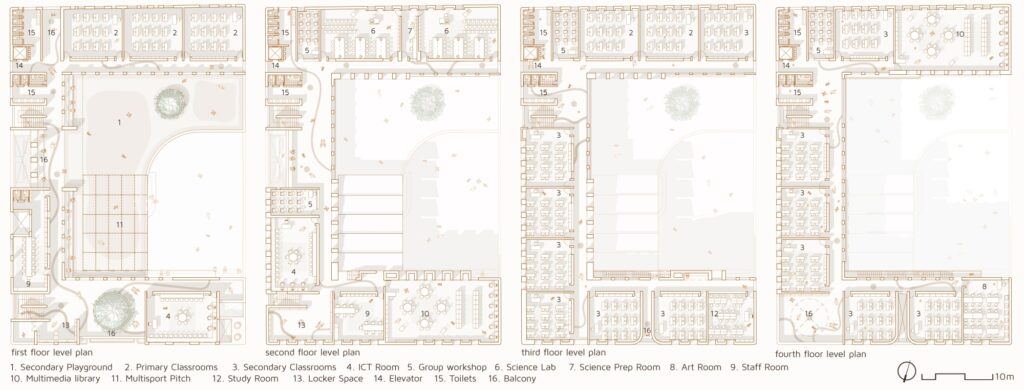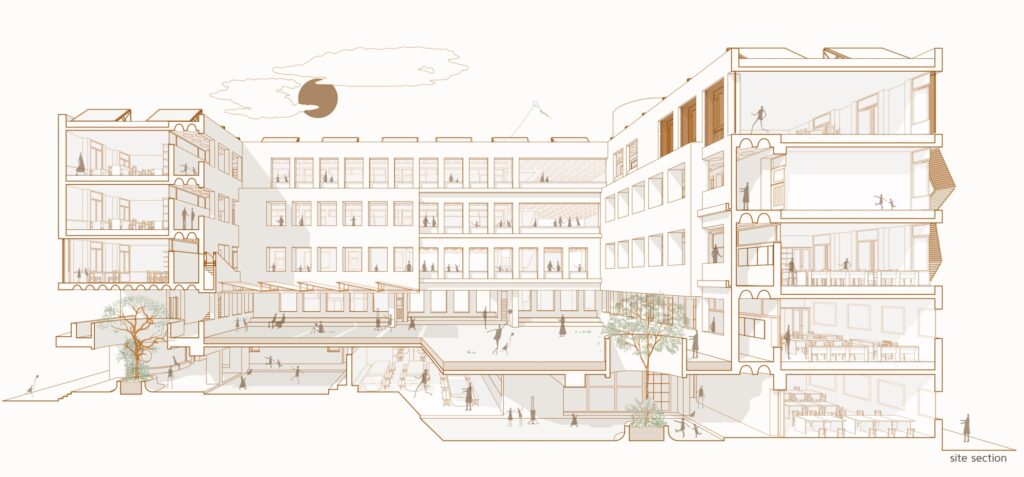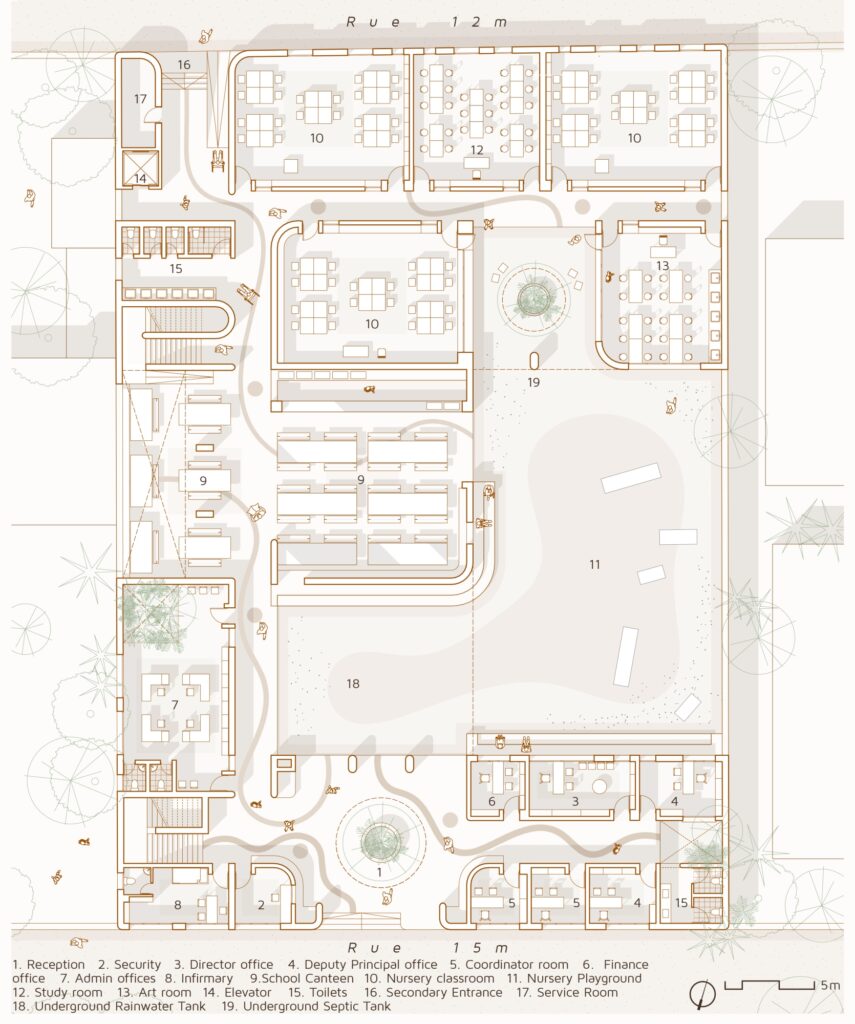Learning Around The Playground
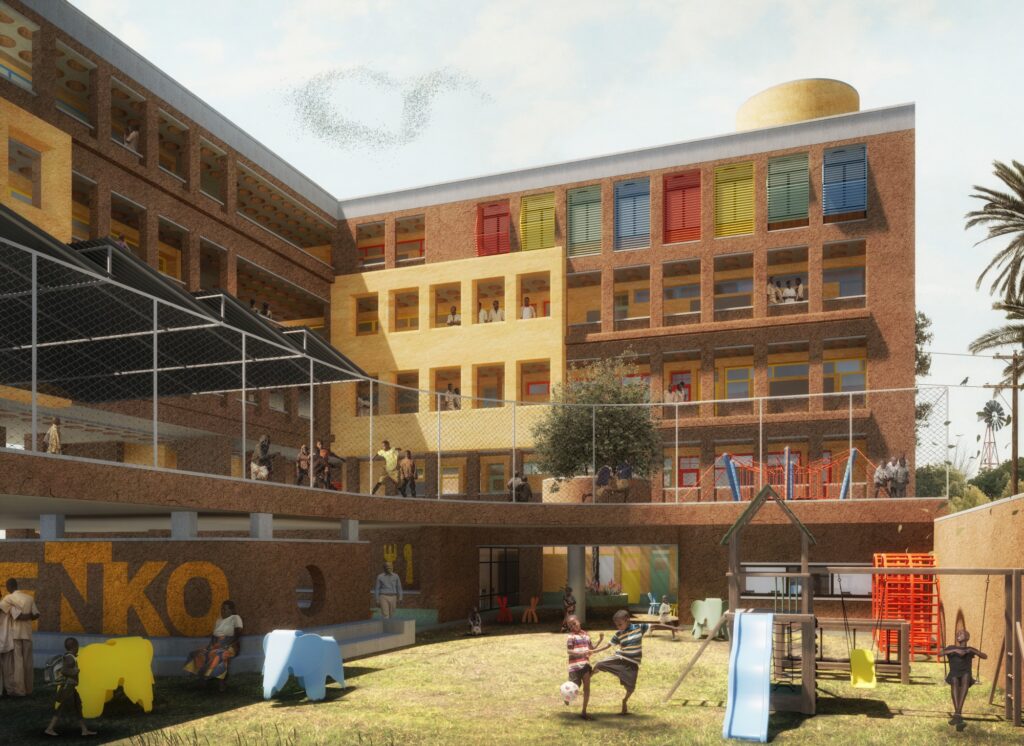
The design process began with the question of how can one conceive a school that not only provides formal education but also inculcates the universal principles within the students?
Since a school is a place where the kid learns what the outside world is like, it becomes quite important how the architecture surrounds them as it helps in moulding the youth for the future.
How can a design create equilibrium between education and play spaces so that the overall growth of a child is ensured?


The necessity of having two distinct playgrounds became our pivot for the design to commence to have a balance in their daily programs. We chose to split them into two levels of equal areas so as to create space for the built mass, which ends up encircling around them creating a courtyard in the centre. The unprecedented heights because of the diverse program and the N-S orientation of the site ensured that the grounds are mostly shaded, creating a micro-climate that is cooler throughout the day.
As one enters the premises they’re welcomed by a tree (symbol of knowledge) in the centre of the reception along with the administrative spaces, the canteen overlooking the ground and the kindergarten. The nursery spaces are designed around a smaller extension of the ground which has a tree in the centre that opens up into the playground above.
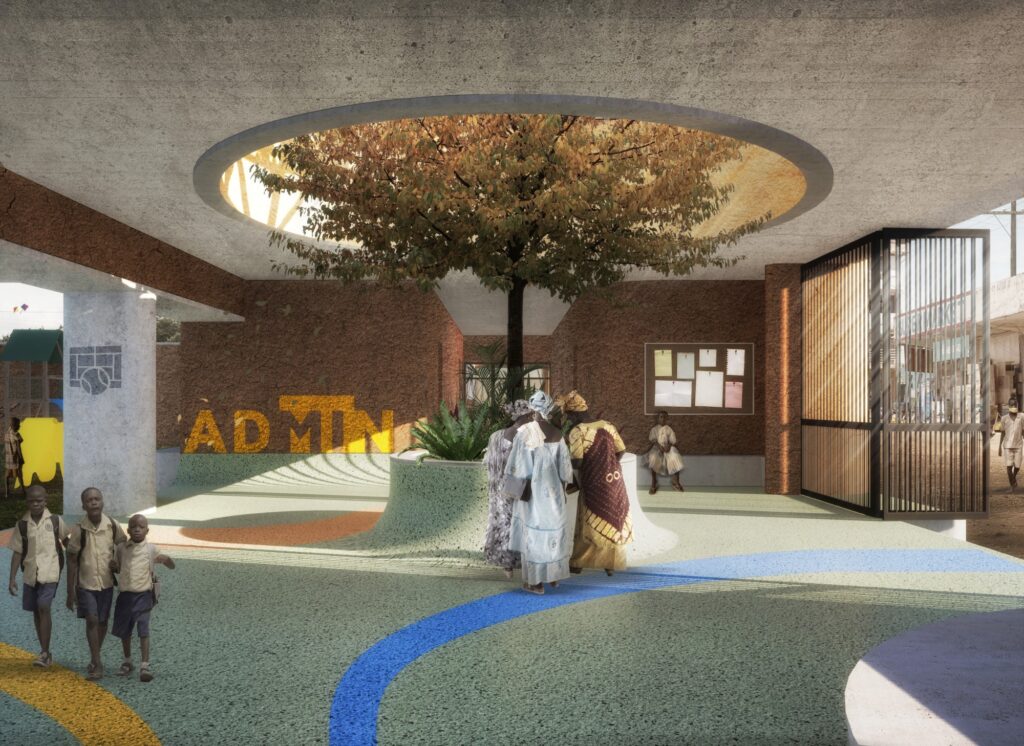
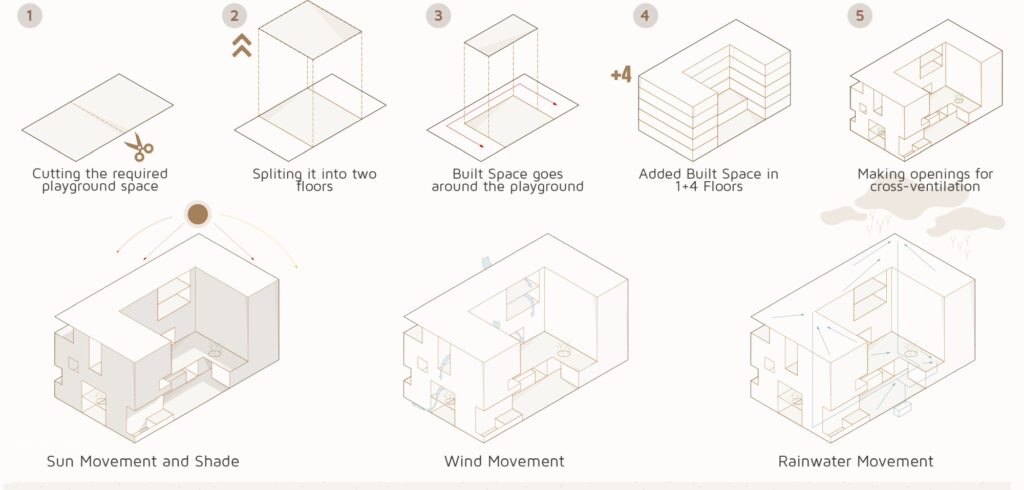
The idea stretched from the thought that most early schools were organised under the shade of a tree out in the open rather than being conducted in closed rooms. This promotes outdoor activity-based learning for the kids where they are free to move in and out of their classrooms.
The primary and then the secondary classes take up the upper floors around a cloister set along with the playground. The non-classroom spaces are further worked out in such a way that there is proper connectivity. The diverse program led to a thick and long wall around the playground. To break that we made large openings in the facade to ensure cross-ventilation.

The classrooms are designed keeping in mind the principles of passive cooling to keep the internal temperatures low through thermal mass and cross ventilation. All the rooms are accompanied by a clerestory window overlooking the corridor to ensure ample daylight and ventilation. Cross-ventilation is ensured through the high-level openings on the corridor side and the perforated opening on the exterior. They create a stack effect that ensures the continuous movement of air through the rooms. Deep recessed windows allow flexible louvre shutters to blind the heat as per the needs, this also allows pushing storage units into the alcove to delay the heat gain through the day. The building is completely accessible by a ramp located on the rear entrance.

Locally fabricated compressed earth blocks with mud plaster seem appropriate for the context while recycling the ancillary materials as much as possible. A filler slab with a locally procured mud pot makes the rooms cooler and also helps in saving the overall concrete requirement. The entire roof’s water is harvested and stored as well as recharged in the water tank below the playground.

